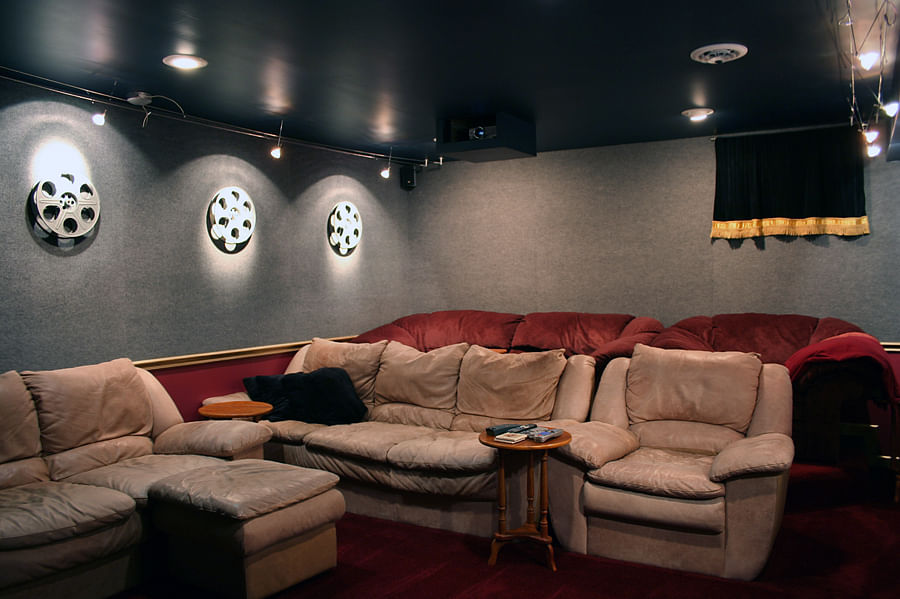
Ever wondered why the expensive loudspeakers you just bought sound awful at home? They sounded great in the store and you shelled out a lot of dough for them.
The answer is in the acoustic characteristics of the room they are being used in.
Good audio stores will generally have proper listening rooms that are acoustically treated. The funny shaped foam panels stuck to the wall or heavy carpeting is the difference between good and bad sound.
Generally, a speaker that is not very expensive will sound better in an acoustically treated room than a high-end speaker in an untreated room.
What is an acoustically treated room?
A room that has high density or similar material placed on the walls, ceiling and corners of the room. This is done to kill sound reflections.
Most of us listen to music or watch movies in the living room or bedroom. The sound that emanates from a speaker hits the walls around, keeps reflecting several times before finally reaching the listener’s ears.
Speakers will sound good when the sound waves that come out reach the listener’s ears directly. Reflected sound is ‘coloured’. Colouring of sound is like adding distortion. An acoustically untreated room will add things like echo and this is highly undesirable.
To avoid colouring, a room must be acoustically treated. In other words, foam or other similar material will absorb sound and thus kill reflections. This is acoustic treatment.
Once the reflections are controlled, there is more direct sound from the speaker to the listener. This will sound far better.
If there is a big budget for a home theatre or dedicated music listening room, there are several companies that will do the job of acoustic treatment and soundproofing even.
Audiophiles and home theatre enthusiasts will go to extremes and build dedicated rooms that have no windows, but only solid concrete walls. They will then get acoustic treatment done and enjoy good sound.
However, it is not the end of the world for those who do not have a dedicated entertainment room. A bit of acoustic treatment will improve the sound.
The first bit of acoustic treatment is to place sofas or chairs that have foam and fabric upholstery. This furniture will absorb a bit of the reflected sound and the results will be noticeable.
The second thing to do is to cover the floor with a thick carpet. This will also absorb sound and limit reflection. This is one of the most crucial treatments since one of the first points of reflection is the floor.
Using curtains on windows and in front of the room doors will also help absorb some reflection.
For the slightly more adventurous folks, a simple exercise can be carried out to identify reflection points. Take a large mirror and place it the floor and in front of the speakers. Move the mirror if the speakers are not visible in it. The point where the speaker is seen in the mirror is the reflection point. Placing a carpet or heavy rug there will help.
The second step is to find the reflection point on the walls. The mirror can be moved along the wall near the speaker till the latter is visible. This reflection point must be treated. One can buy acoustic panels and hang them at these reflection points on the walls.
If the room has a wall without any doors or windows, one can consider hanging a thick drape along the entire length and breadth of the wall.
These are a few steps for basic acoustic treatment.
Such acoustic treatments need not be only when expensive speakers are being used. Even if one is listening to music through decent computer speakers, a bit of sound absorbent material around the listening area will improve the sound.
In a custom-built solid concrete room, acoustic panels can be placed at strategic points so that reflections are contained to a large extent. However, it must be noted that random placement of acoustic foam/ panels may not give the desired results. There is a science to it. There is a lot of material and practical guides on the internet that can help with this.
There is also another aspect to having good sound in a room and that is room dimensions. This can be slightly complicated because is it has to do with the physics of sound waves. If there are options in choosing a listening room, it would be advisable to do some reading as to which room dimensions are acoustically better.
There is one more aspect to getting good sound – speaker placement. If it is just regular left and right speakers for music, it is less complicated. But for home theatre speakers, it can be tricky. Again, a bit of research and manufacturer-recommended placement of speakers is a good idea to get the best sound.